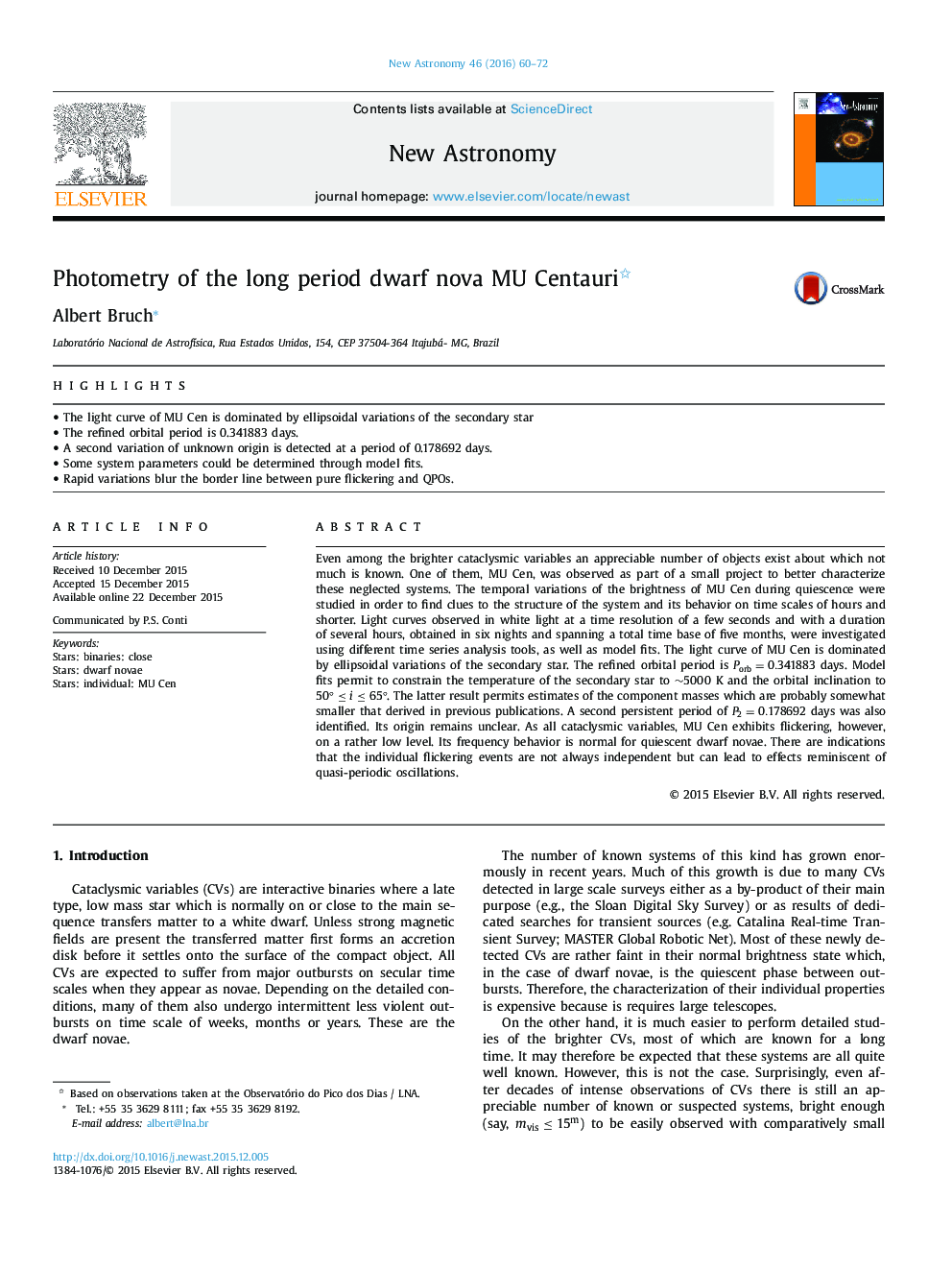| کد مقاله | کد نشریه | سال انتشار | مقاله انگلیسی | نسخه تمام متن |
|---|---|---|---|---|
| 1778787 | 1523732 | 2016 | 13 صفحه PDF | دانلود رایگان |

• The light curve of MU Cen is dominated by ellipsoidal variations of the secondary star
• The refined orbital period is 0.341883 days.
• A second variation of unknown origin is detected at a period of 0.178692 days.
• Some system parameters could be determined through model fits.
• Rapid variations blur the border line between pure flickering and QPOs.
Even among the brighter cataclysmic variables an appreciable number of objects exist about which not much is known. One of them, MU Cen, was observed as part of a small project to better characterize these neglected systems. The temporal variations of the brightness of MU Cen during quiescence were studied in order to find clues to the structure of the system and its behavior on time scales of hours and shorter. Light curves observed in white light at a time resolution of a few seconds and with a duration of several hours, obtained in six nights and spanning a total time base of five months, were investigated using different time series analysis tools, as well as model fits. The light curve of MU Cen is dominated by ellipsoidal variations of the secondary star. The refined orbital period is Porb=0.341883Porb=0.341883 days. Model fits permit to constrain the temperature of the secondary star to ∼5000 K and the orbital inclination to 50° ≤ i ≤ 65°. The latter result permits estimates of the component masses which are probably somewhat smaller that derived in previous publications. A second persistent period of P2=0.178692P2=0.178692 days was also identified. Its origin remains unclear. As all cataclysmic variables, MU Cen exhibits flickering, however, on a rather low level. Its frequency behavior is normal for quiescent dwarf novae. There are indications that the individual flickering events are not always independent but can lead to effects reminiscent of quasi-periodic oscillations.
Journal: New Astronomy - Volume 46, July 2016, Pages 60–72